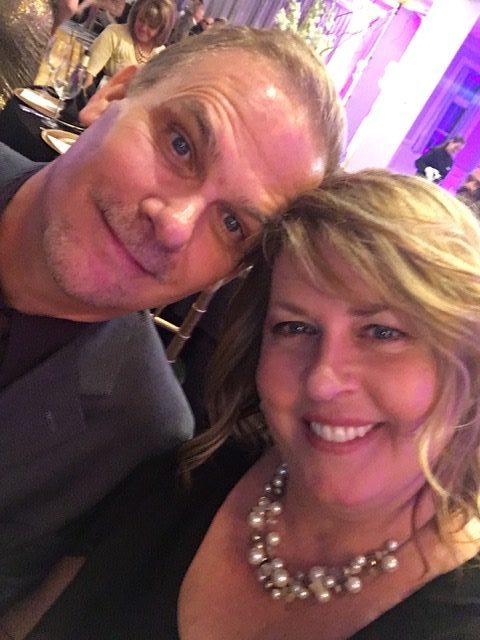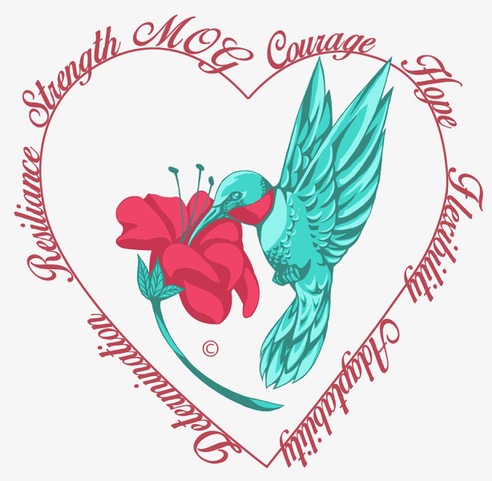
Choose Your Language:
Posted by: The Sumaira Foundation in MOG, Patient, Voices of NMO
Now that I have been diagnosed with Myelin Oligodendrocyte Glycoprotein Antibody-Associated disease, or MOG-Ab disease, I have met others who are afflicted and have listened to their stories. They all start similarly, with an acute attack, out of the blue, and always marking the start of an unexpected turn in health. My story is different. I experienced unexplained chronic fatigue and a slight dimming of vision: a little peek of what was to come…
 Almost 19 years ago at the point of writing this story, I was a young mother, with a wonderful husband and 2 beautiful little girls. By all rights, I was in the happiest part of motherhood. I had a good life with my family and I had plenty of energy. I don’t really remember how or exactly when it came on, but I started to notice that I was feeling very fatigued, shaky and weak, especially when exerting myself. I had labored breathing at times and I felt like my legs weighed a million pounds. It is hard to describe, but it seemed like if I stopped struggling to breath, my body would just stop breathing naturally. A typical day for me started with normal energy, which only lasted about 2 hours. After that I could barely walk, I had labored breathing and I felt like if I did not lie down, I would fall down. Frankly, it was frightening. If I took a nap for about an hour, I was fine again and the whole cycle would repeat. That feeling, while waxing and waning, did not leave me for two years. I prayed and a few times, there were tears. Because of the support of my husband and family though, I never gave up hope even though life was over as I knew it.
Almost 19 years ago at the point of writing this story, I was a young mother, with a wonderful husband and 2 beautiful little girls. By all rights, I was in the happiest part of motherhood. I had a good life with my family and I had plenty of energy. I don’t really remember how or exactly when it came on, but I started to notice that I was feeling very fatigued, shaky and weak, especially when exerting myself. I had labored breathing at times and I felt like my legs weighed a million pounds. It is hard to describe, but it seemed like if I stopped struggling to breath, my body would just stop breathing naturally. A typical day for me started with normal energy, which only lasted about 2 hours. After that I could barely walk, I had labored breathing and I felt like if I did not lie down, I would fall down. Frankly, it was frightening. If I took a nap for about an hour, I was fine again and the whole cycle would repeat. That feeling, while waxing and waning, did not leave me for two years. I prayed and a few times, there were tears. Because of the support of my husband and family though, I never gave up hope even though life was over as I knew it.
Early in this two-year battle, I remember noticing one day that our normally bright kitchen seemed dimmer than usual. I asked my husband what he thought and he said it didn’t seem darker to him. It was very subtle and only lasted a week. Also during this time, I remember many trips to the doctor to try to figure out what was wrong. The repeated visits were frustrating for my doctor, who just told me that he had no idea what was wrong with me as my blood tests were perfect. His staff stopped returning my calls. Frustrated myself, I found a new doctor. I was told the same thing by this new doctor as well and my visits, I could tell, were an annoyance to him. Despite asking for more tests, I never saw a neurologist or was given an MRI. I look back and wonder if they would have seen something. My doctor did, however, send me to a psychiatrist because he suspected that my fatigue was caused by depression. Despite being adamant that I was not depressed, he insisted, so I went. After talking with the psychiatrist, he said the funniest thing I’ve ever heard one doctor say about another. I won’t repeat it here. Needless to say, he did not diagnose me with depression. He instead said that he did not know what was wrong with me, but he did know that I needed a new doctor.
Fast forward to April of 2014. After a terrible cold, I started having intense stabbing pain around my eye sockets, especially while rolling them around. I was treated with antibiotics assuming it was a sinus infection, but the treatment did not work and the pain only got worse. It wasn’t long before I started going blind. I raced to the eye doctor who immediately got me in touch with an optic neurologist, Dr. Shalom Kelman in Baltimore. By the time I saw him, I was almost blind. He confirmed that I had Optic Neuritis and he treated me with a round of high-dose Solumedrol for 5 days. He hoped that would be the end of it, but a week after the treatment ended, I was completely blind. It happened twice more, in one eye, then the next, and included a week in the hospital. The fourth time was in both eyes, and that’s when he suggested that I had Neuromyelitis Optica, or NMO, and I ended up in Dr. Michael Levy’s hands at Johns Hopkins Medical Center in Baltimore, Maryland. At the time, Dr. Levy put me on Rituxan which put a stop to my persistent attacks. What a relief! After a blood test to determine whether I had NMO, I was categorized into a group of 30% of people who meet the criteria for NMOSD but test negative for the Aquaporin-4 antibody, which is considered the blood test for NMO. Dr. Levy diagnosed me at that point for NMOSD. I went on for 3 more years using Rituxan, but every time I caught a cold, I had another attack, usually in my eyes, but once or twice in my spine, with a small lesion causing leg spasms and bladder issues. Finally, when the MOG antibody test was perfected, Dr. Levy tested me for MOG. It was positive.
 Because of my new diagnosis of MOG-Ab disease and the failure of Rituxan, I was put on CellCept. It has been 2 years with no relapses and I feel great! I have plenty of energy. My wounds have mostly healed but my eyes are damaged from past attacks. Thankfully, I can function normally and live independently.
Because of my new diagnosis of MOG-Ab disease and the failure of Rituxan, I was put on CellCept. It has been 2 years with no relapses and I feel great! I have plenty of energy. My wounds have mostly healed but my eyes are damaged from past attacks. Thankfully, I can function normally and live independently.
Someone once told me that either I would get better and no one would ever know what was wrong with me, or I would get much worse and doctors would figure it out. What words of wisdom they were. I had to practically lose my eyesight in order to finally find answers. Having a rare disease often sadly means that no one is out there to help. No resources, no support and no answers. I was lucky to finally find Dr. Levy; not everyone is. This is the reason that I started The MOG Project.
Others affected by MOG have joined this team of people with a desire to spread awareness: Kristina Lefelar, Amy Ednie, Cynthia Albright, Peter and Pamela Fontanez, Jen Gould, Andrea and James Mitchell, Diana Lash, Chelsea Ednie, Jim Broutman and Sarah Huson-Whyte. These members span across the United States and across the pond, and all have had their lives turned upside down by MOG. The members of the MOG Project, known as the MOG Squad, work hard to advocate for others. Our mission is to support the community of those who have nowhere to go and are frightened at the prospect of having a rare disease with no cure. Our overall mission is to raise awareness, educate and advance research because, as a rare disease, there is a lot of misinformation, lack of education for patients, caregivers and doctors, and not a lot of research addressing MOG-Ab disease. We are so lucky to have found each other and even luckier to all be filled with resolve to accomplish great things. While this is not the end to my story, it certainly is the turn upward to a bright new chapter filled with hope.